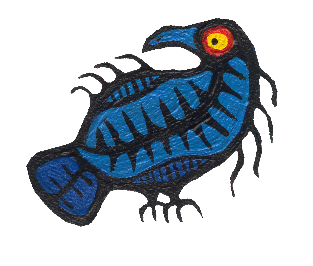Native-Art-in-Canada has affiliate relationships with some businesses and may receive a commission if readers choose to make a purchase.
- Home
- Plains Ojibway
The Ojibway
The Plains Ojibway and Their Woodland Cousins
It used to be that the Ojibway people as part of the great Eastern Woodlands Indian culture, were much the same from one part of their territory to the next. Economies differed depending on whether the land allowed farming, but dodem, the clan system of governance was universal. They referred to themselves as Anishnabe - the good beings .
But as pressure on the available land came from European immigration some Anishnabeg moved out on to the Plains where the culture was influenced by the new environment and new neighbors,
Originally the Anishnabe lived in what are now the mainland Maritime provinces of Canada and the upper parts of Maine. The stories say that about a thousand years ago seven ancestral 'grandfathers' made themselves known to the the good people and told them to prepare themselves for great changes because light skinned men would arrive from across the Great Salt Sea.
The great migration began at that point and continued for the next five hundred years. By the time the French explorer, Jacques Cartier sailed into the mouth of the St. Lawrence River in 1534 the Anishnaabe nation had, for the most part, moved to the interior of the continent and settled along the shores of the Great Lakes.
As time went by and they endured more and more pressures from European settlement they dispersed even further...north towards the tundra and west onto the great plains.
Because the land and the climate differed from the northern to the southern part of the Anishnaabe territory, the social structures adapted to fit the realities of life.
The Plains Ojibway
These folk are a distinct ethnic group in language, social organization, art, ceremonies and costume. They are derived from small groups who migrated onto the Prairie, beginning near the end of the eighteenth century because of economic and social pressures from European settlement.
Under the influence of the Northern Plains tribes the traditional woodlands culture underwent extensive change, including the adoption of a bison-hunting economy.
Today the Plains Ojibway occupy parts of northern North Dakota and Montana and are also found just across the Canadian border in Manitoba and Saskatchewan.
The Woodlands Ojibway
The Woodlands Ojibwe represent what mainstream North Americans think of as classic Ojibway culture.
The fellow who gets all the credit for researching and documenting the Woodlands Ojibway lifestyle is a Mr. Henry Schoolcraft. He was a 19th century American geographer much noted and quoted for his interpretations of various First Nations' societies.
But it was his wife, Jane, who is the unsung hero.
Jane Schoolcraft was the daughter of an Anishnaabe "country wife"...the common-law companion of an Irish immigrant. Jane's knowledge of the language, customs and legends of her mother's people were what made her husband famous and it was her knowledge, too, that was used by Henry Longfellow in his poem Hiawatha. The poet took a great deal of artistic license in the writing...the name Hiawatha is drawn from Iroquois sources for example, but the stories are based on Ojibway oral history.
- The Northern Woodlands territory is part of the Laurentian Shield...land that had been scraped clean of top soil in the last ice age 15,000 years ago. In the northeast it encompasses and area that includes the headwaters of all the river systems that flow into the western side of James Bay. The western boundaries are roughly Lake Winnipeg and its river systems.
- The Southwestern Ojibway occupy the area south of Lake Superior running from Upper Michigan, through northern Wisconsin and Minnesota and along the southern border of Ontario as far west as Lake of the Woods. In historical times their economy included a very small amount of farming, but the harvesting of wild rice and maple sugar was important, too. Those who made their homes in the interior parts of the territory were mainly hunters and trappers with fishing secondary, but fishing was the major subsistence activity among the more northern groups. The Southeastern Ojibway occupied what is now Lower Michigan, the shores of Lake Huron and a sector of Ontario to the north of Lake Huron. Their subsistence economy was based on farming, hunting, fishing, and harvesting of maple sugar. The more temperate climate allowed for large permanent summer villages but family hunting bands still dispersed during the winter months.
Theirs was a hunting, fishing, trapping economy. Small isolated bands joined together in the summer months but separated during the winter onto family hunting territories. This system was still in existence in my childhood seven decades ago.
Further east above what are now Lakes Erie and Ontario, the climate is more temperate and the people tended toward larger, more complex and sedentary communities with more diversified economies.
Within the Southern Woodlands the distinction between the southwestern and southeaster tribes was more distinct on both geographical and cultural grounds.

Canoes - Homegrown Transportation
It wasn't too long ago that Ojibwa children grew up in their family's canoe. I talk a bit about my experience but you'll notice at the bottom of the page there are links to pages about birchbark canoes.
Growing up in the bush north of Lake Superior wasn't all fun and games...although there was plenty of that. As kids we were expected to do our share of chores.
I've read accounts of the hard times some native women had because they lived in a culture dominated by men. I was lucky...my Mom had to work hard, but so did my Dad. If you read this story you'll see that there was a healthy balance of expectations that they had worked out between themselves





